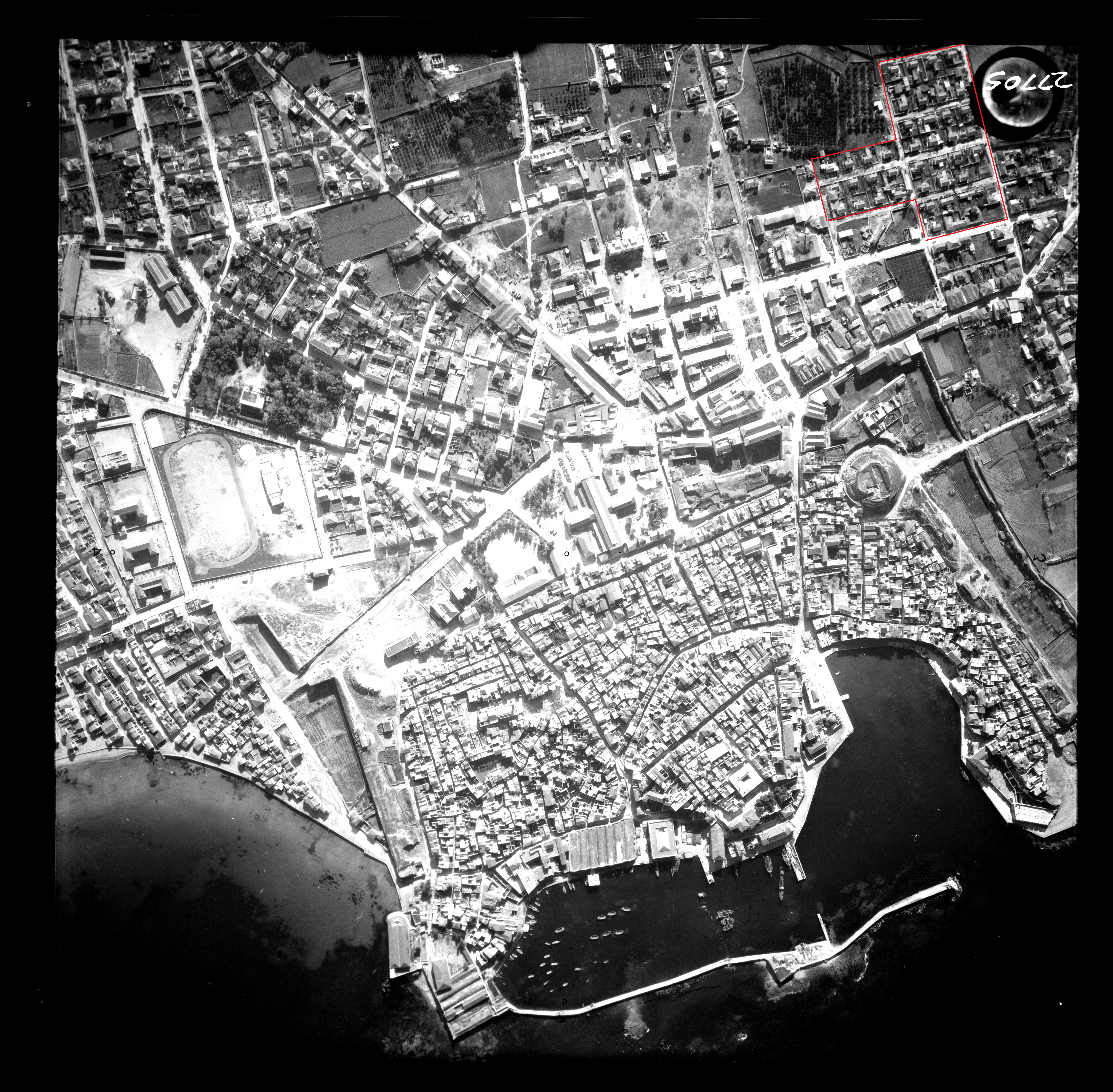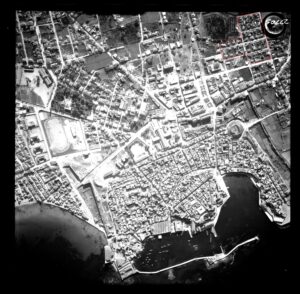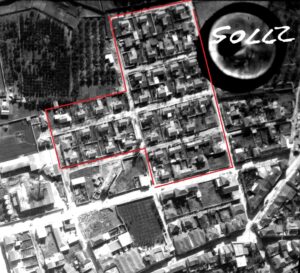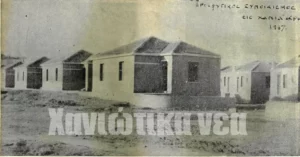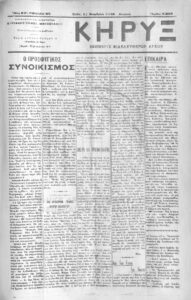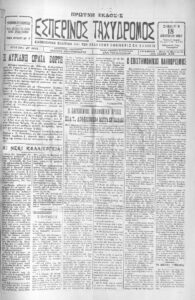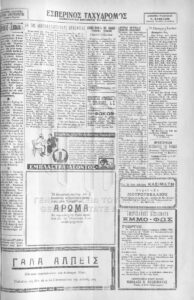The Refugee Settlement Commission in Chania
City
Migration Period
City Narratives
Date
Tag
Category
Full Description
In the city of Chania, refugee rehabilitation was a lengthy process that took many forms. During the first few years, many refugees were housed in the already existing housing stock, but in 1928, the Refugee Settlement Commission started constructing the local settlement for the rehabilitation of urban refugees.
The settlement was built in an unzoned area of the city, southwest of the Muslim cemetery, as we can see in this aerial photograph of the city from 1937. Most of the settlement’s 36,000 square metres of land used to belong to Mustafa Aligioti, an exchangeable Muslim. The state granted the land to the Commission with a law that passed in 1930, after the construction of the dwellings had been completed.
The settlement comprised 40 duplex houses meant to house 80 families. Twelve plots of land were not used in this first phase of construction but were developed a few years later by the Greek state. It appears that the settlement was built according to the lowest acceptable standards. At 35 square metres, the houses were too small to house a family. There was a small bathroom outside of each dwelling which also had about 250 square metres of yard. Every duplex had its own well since there was no central water supply. Later, the residents could acquire a license to add a utility room.
The complaints about the settlement published in the press at the time forced the local authorities to look into the living conditions and conduct an on-site inspection. The complaints ranged from criticising the small size of the houses to raising issues of morality: ‘Parents and children will have to sleep in the same room. As a result, the children will be exposed to instances of spousal tenderness and delve into the mystery of life way too early […]’.
The dwellings that were built later by the state were larger and better appointed. These state settlements were built in various parts of the city depending on the availability of exchangeable land plots: Fystikies (today known as Koubes), Agios Ioannis, Dikastiria and Bolaris. The housing lottery for the refugees who had not been rehabilitated yet was published in the press. The report from a local newspaper presented here publicised the names of the 72 families which would participate in a lottery for houses in the new state settlement in Bolaris.
Moreover, exchangeable land was divided into plots to be distributed among refugees who could use them to build their own housing. This process was not completed during the interwar, so the housing rehabilitation of refugees was impeded by the outbreak of the war and the German occupation, with the bombardment of the city increasing the unhoused population. During the 1950s, the state tried to resume the process of granting land plots to non-rehabilitated refugees who lived in Chania. Often, these plots were finally acquired by their descendants, since by then some of first-generation Asia Minor refugees who were eligible had died.
Bibliography
Aimilia Kladou-Bletsa, Chania. 1913-2013: 100 years since the Union, published by the Technical Chamber of Greece – Department of West Crete, 2015.
